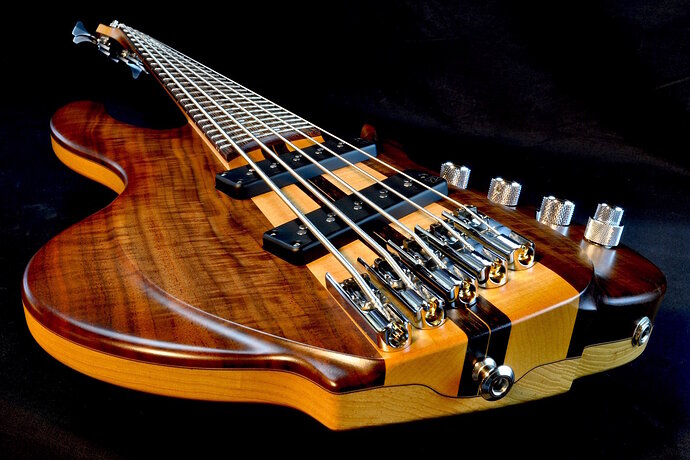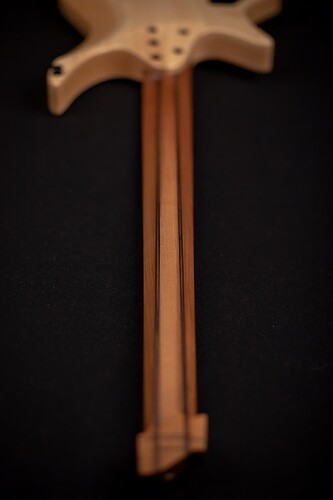I am having a little issue with finding the right height on the instrument using the strap. I read somewhere that the bass body and neck should sit over the belly button more or less, and the strap should be adjusted in a way that is about at the same height both sitting and standing. Other people say it’s entirely subjective, but personally I would find it hard to play the bass a-la Duff McKagan, if you know what I mean. What do you usually do about this, and do you use any strap lockers?
Find your idols then you can start by trying to copy them, at the very least you can channel their playing ability by looking like them, lol. It’s sad but true.
My heros are Nathan East and Leland Sklar both are closer horizontal than the 45* so I play that way. It’s not as comfortable playing position for the left hand as the “standard” half way between vertical and horizontal but i get the benefit of better overall balance of the instrument on my shoulder and I play it the same way sitting down or standing up.
Find your way for now and you can change later. Posture is the most important for longevity of playing if you don’t know what you don’t know the only way to find out is to try it out.
Is this one of the reasons why the fretboards on basses like Dingwall are “curved”, so to follow the natural rotation of arms?
I believe it’s not. AFAIK it’s to do with the different scale lengths of the lower strings (35") and higher ones (34" or shorter).
Like a multiscale bass of sorts?
Zigactly und precisemently!
@Rob150 Josh covers this in the course and also here:
Thank you Howard!
Adjusting the strap so that it is in the same height while sitting and while standing is a very good starting point. You can adjust to taste afterwards.
I like to have it a bit lower while standing, and have one of those Levy’s straps that can be adjusted on the fly.
If you are playing with a pick, a lower position of the bass can help with picking speed, as your hand has an easier time following the “natural movement” of the muscles in the arm (“reverse dart thrower motion”)
That’s awesome thank you!
Curved no just fanned on the multi scale type bass.
This is another idea of ergonomics too twisted for me. ![]()
This is also a different back design by Steinberg in their Borden neck. No curve just basically 3 straight but curve to follow your thumb. I don’t have their bass(too ergonomic for me but their guitars is very comfortable to play.
The curve on fret wires my understanding is to allow for more precise intonation. I have a bass with it and it is so subtle you would never notice by playing.
I found i was having trouble seeing my what my hands were doing as it was too low on my abdomen (ie i am fat lol) and so it was angling it down away from me. I raised it a couple inches and now it leans up towards me and i can actually see what i am doing.
Over time you’ll find the need to look at your hands less and less. If you put in the work you’ll be able to move from a G to a C just from muscle memory. Ain’t practice cool ![]()
I have mine fairly high. It may not look as cool as having it slinging down by your knees, but cool is not what I’m aiming for atm. I want good technique and clear notes. I think in time I will drop it a bit, but for home practice, I don’t care.
In my limited experience, the position is also instrument-dependent. If you own or play more than one bass, you may find that what works best in one case is not as comfortable in the other(s).
If something hurts don’t force it, try and change the position a little bit. Strap length, neck angle and tilt away from the body all matter, again, depending on the context.
But as posted before, the best starting point is probably Josh’s video ![]()
Who makes these??
Torzal
Thanks - cool!
At the beginning of covid their bass was 4000 now is doubled, lol.




